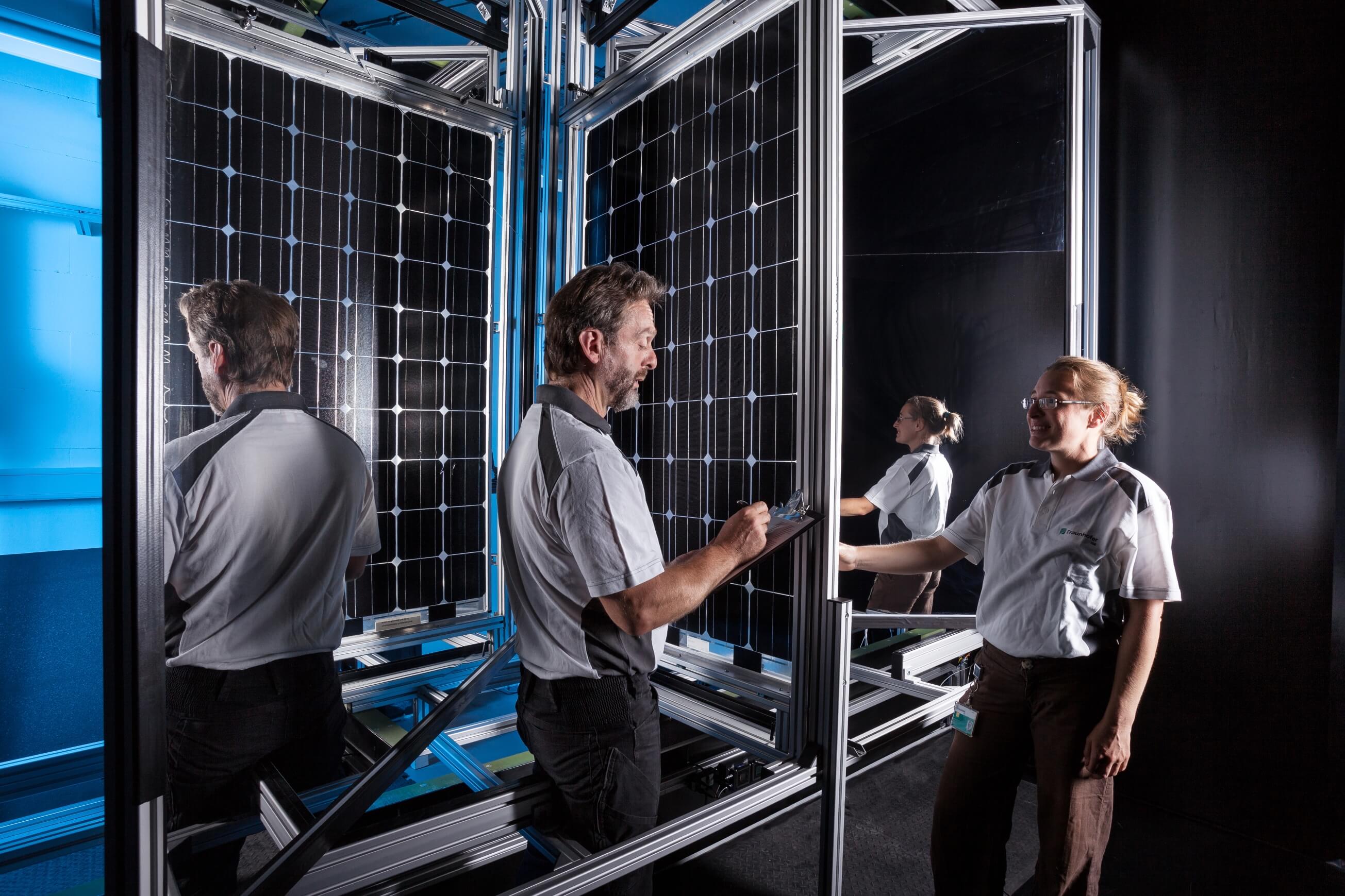| Duration: | May 2016 - October 2019 |
| Contracting Authority/ Sponsors: | German Federal Ministry of Economic Affairs and Energy (BMWi) |
| Project Partners: | SolarWorld Innovations GmbH |
| Project Focus: |
MOSBIT – Development of Characterization Methodology for Modules and Systems Applying Bifacial PV Technology

Bifacial PV technology in compatible module and system structure has the potential of significantly increasing yields and contributing to significant cost reductions. The “MOSBIT” project focuses on method development for comprehensive module and system characterization. Furthermore, bifacial PV technology based on PERC should be further developed at the module and system level to achieve improvements in output, yield, service life, and costs. The objective of the project is the provision of a consistent process for module and system assessment, from module development, to characterization and yield prognosis, for bifacial photovoltaics.
As basis for any qualification, we develop basic processes for precise lab characterization of bifacial modules under modified STC conditions and for extended energy rating. We define an output equivalent for bifacial modules for the direct comparison to monofacial modules, with the perspective of standardization in IEC standards. We develop a concept for an inline measuring procedure for production-accompanying module characteristics.
To simulate yield at the system level for precise consideration of backside irradiation, we extend our ray-tracing methods. Using these precise yield models, we optimize the design and assembly of the modules to achieve a performance ratio (PR) of at least 100 % for bifacial PV power plants. Furthermore, we prepare yield prognoses for representative location classes and Albedo values ad use the simulation results for the validation of simplified yield models for ongoing system planning.
We validate our yield modules trough module monitoring at different locations. In addition, we use the results of the irradiation analysis to assess different improvement approaches for CTM output as well as the module response to inhomogeneous irradiances.